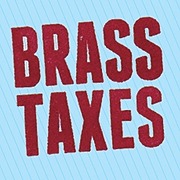Buying, Owning, and Selling a Home
Keeping Track of Home Improvements
Any time you're spending money to make significantly improve your home, make sure to keep track of what you're spending. It impacts the taxes you pay when you sell, but can also be important now if you have a home office or rent out part of your home.
Updated 4 days ago
Any time you make capital improvements to your home, such as landscaping, storm windows, fences, a new energy-efficient furnace, a new roof, or a renovation, you want to keep track of the total cost. Even if you don't have a home office or rental in your home, these expenses will generally get added to the purchase price of your home (the basis), which helps us accurately calculate the profit you make when you sell your home.
Think of capital improvements as basically anything that is really annoying to do (renovations are the worst while they're happening!) and/or anything that would be a major issue if it came up in a home inspection.
Some examples:
Changing a light fixture is not a capital improvement, but updating your wiring is.
Fixing the toilet is not generally a capital improvement, but replacing your plumbing likely would be.
Painting does not count as a capital improvement on its own, but if you do it at the same time as other significant work, like repainting your kitchen during a renovation, then it counts towards the total cost of that capital improvement.
Note for Folks with a Home Office or Rental
If the capital improvement are entirely for business purposes (for example, if a musician builds out a recording studio in an outbuilding or the basement of their home, or if your primary residence is a two-family and you install new flooring in the rental portion), we'll actually end up depreciating those expenses while you're in the home. Check out our article for homeowners with a home office or rental.
A Couple of Less Common Circumstances to Keep in Mind
Medically Necessary Home Improvements
When figuring out your out-of-pocket medical expenses for the year (remember that homeowners should keep tabs on that), you can include the cost of installing health care equipment or other medically necessary home improvements that benefit you, your spouse, or a dependent. The only thing to be mindful of is that you can't fully deduct improvements that make your home more valuable.
What do we mean by that? Many improvements to make a home more accessible, like adding entrance ramps, widening doorways, or installing railings and support bars, don't increase the value of a home and can be fully deducted. But if you were to add another room on the first floor of the home or fully renovate the kitchen, those things would likely increase the value of your home, and so we can't fully deduct them.
Energy-Saving Improvements
In the past, you could receive a tax credit for certain energy-efficient home improvements. The major home energy improvement tax credits will expire on January 1, 2026, but if you added solar power, solar water heaters, an energy-efficient HVAC system, etc., in 2025 you may still be eligible for the tax credit. You'll still want to keep track of these updates as capital improvements, even if they're no longer eligible for the tax credit.
Important Paperwork To Keep
Receipts for any appliances that you might sell with the house
Receipts for any work you have done to the house
Make sure you've got the numbers from all the different contractors and suppliers

